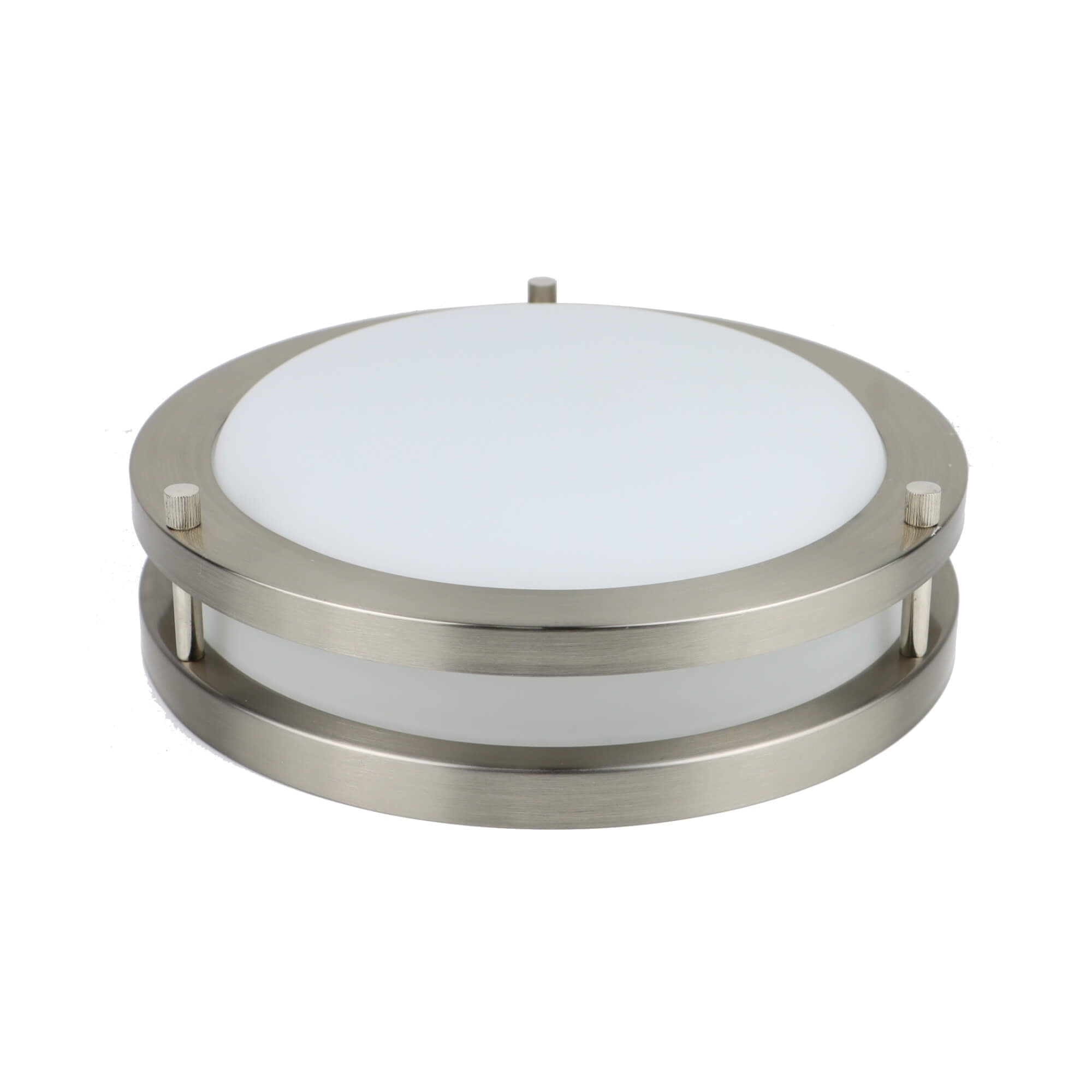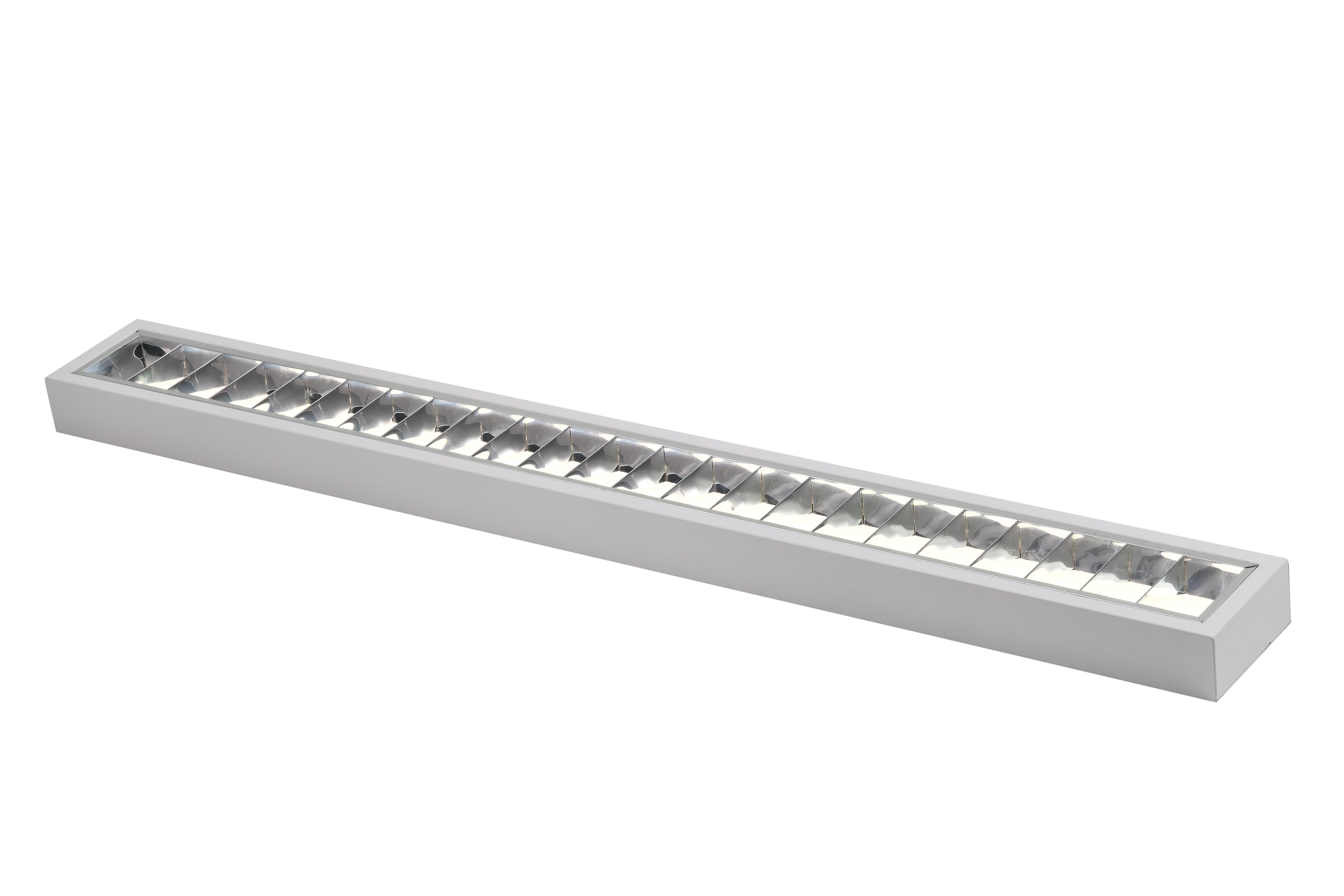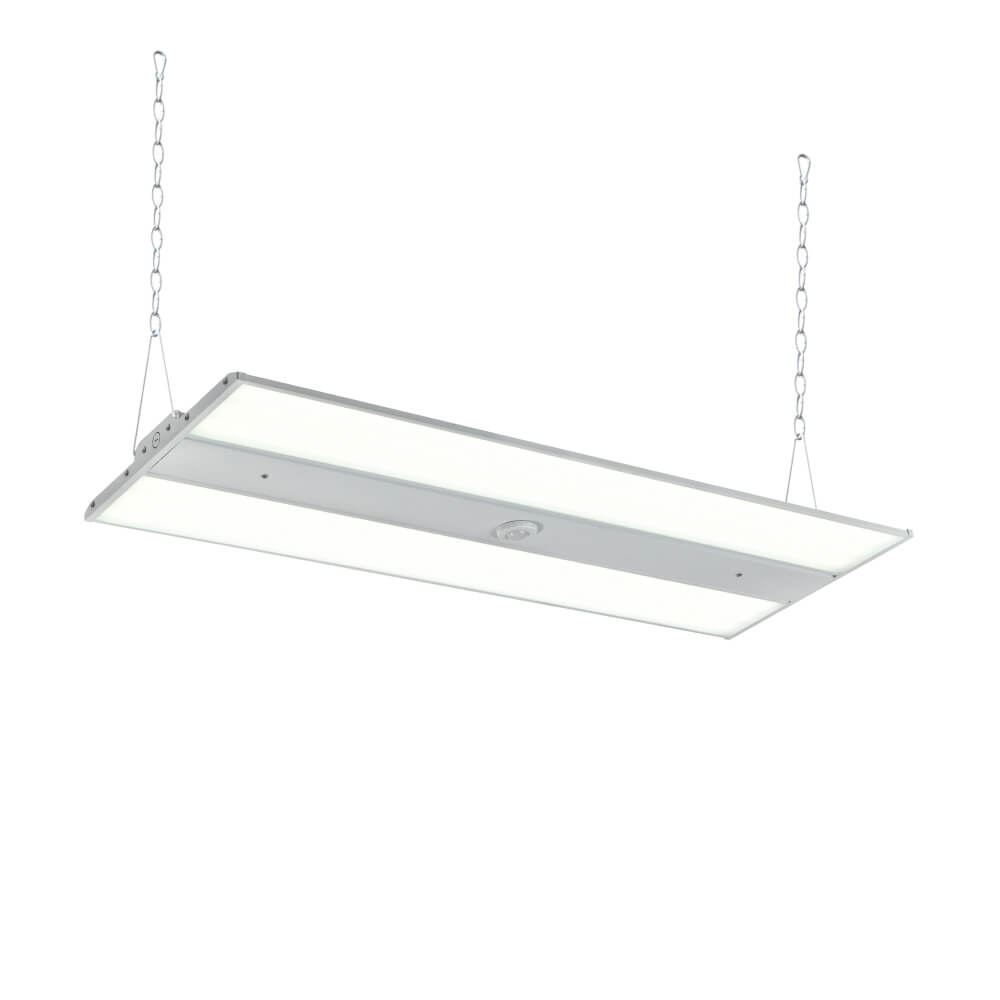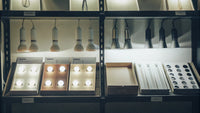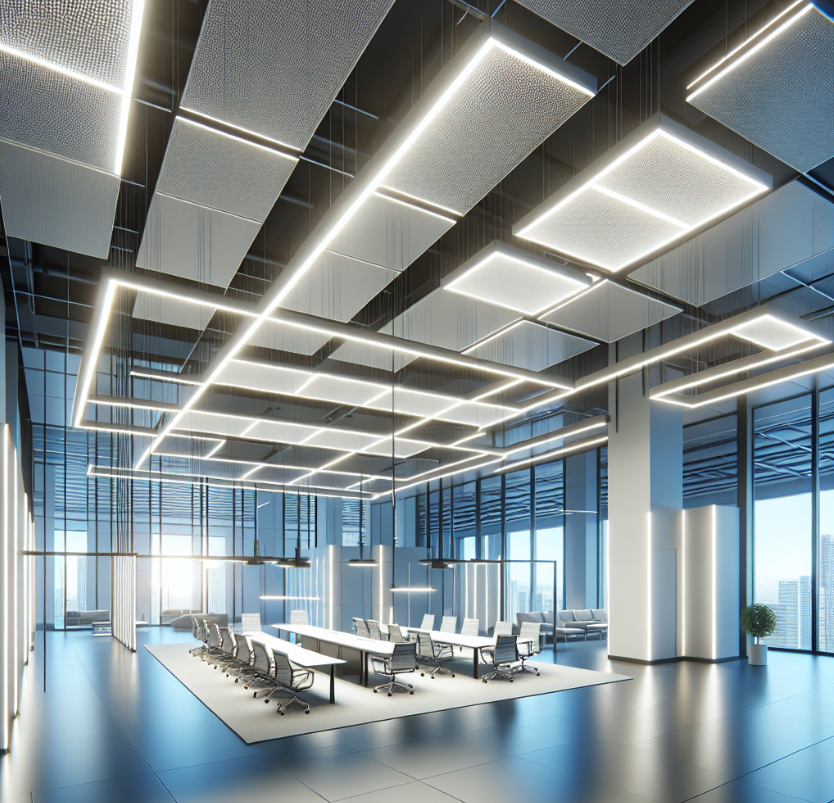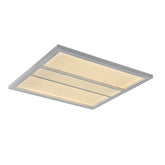LED Panel vs Troffer Lights: Choose the Best for Your Space
| Aspect | LED Panel Lights | LED Troffer Lights |
|---|---|---|
| Appearance and Design | Ultra slim, flat, modern | Traditional recessed look |
| Installation Methods | Surface mounted or recessed | Drop in installation in ceiling grids |
| Light Distribution and Coverage | Broad, uniform illumination | Focused or directional lighting |
| Energy Efficiency and Cost-Effectiveness | Slightly more cost-effective | Highly energy efficient, higher upfront cost |
| Maintenance and Lifespan | Surface cleaning, minimal maintenance | Easily removed for repairs, long lifespan |
| Suitability for Different Spaces | Large, open areas | Task-oriented or multipurpose environments |
Upgrading to energy efficient lighting is a smart move for businesses and homeowners looking to reduce their carbon footprint and save money on electricity bills. Among the most popular options are LED panel lights and LED troffer lights. But what exactly are they, and which one is the better choice for your space?
This article will dive into the key differences between LED panel lights and LED troffer lights to help you make an informed decision. You'll learn about the unique features, advantages, and typical applications of each type of lighting. We'll compare their appearance, installation methods, light distribution, energy efficiency, cost effectiveness, and maintenance requirements.
Additionally, you'll gain insights into the specific factors to consider when choosing between LED panels and troffers, such as the size of your space, ceiling height, desired lighting levels, and overall aesthetic goals.
By the end, you'll have a comprehensive understanding of these two popular LED lighting solutions and be equipped to select the best option for your needs.
What are LED Panel Lights?
LED panel lights are ultra thin, flat light fixtures that provide widespread, evenly distributed illumination. At their core is a panel made up of many individual LED bulbs enclosed in a sturdy metal frame. This allows the light to disperse uniformly across the entire surface area.
Advantages
- Energy efficiency: LED panels consume far less electricity than traditional fluorescent lighting while providing the same bright, natural looking illumination, resulting in lower utility bills.
- Long lifespan: With minimal maintenance required, LED panels can keep shining bright for over a decade, greatly reducing the hassle and costs associated with frequent bulb replacements.
-
Slim profile: Their sleek, thin design allows LED panels to be surface mounted to ceilings or walls with a modern, inconspicuous appearance that blends well into the decor.
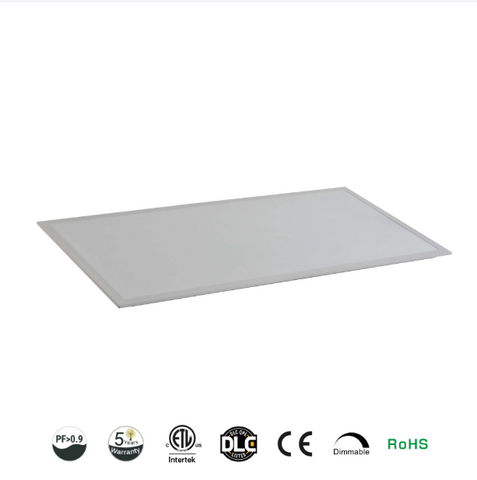
Typical Applications
LED panels have become increasingly popular for lighting large open spaces like:
- Offices
- Schools
- Retail stores
- Warehouses
Varieties
- Edge lit LED panels: The LEDs are installed around the circumference, allowing for an ultra-thin design.
- Backlit LED panels: These provide greater illumination levels ideal for brightly lit commercial spaces.
Overall, LED panels are an energy efficient, long lasting, and aesthetically pleasing lighting solution suitable for a wide range of residential and commercial applications where widespread, uniform illumination is desired.
What are LED Troffer Lights?
LED troffer lights are recessed lighting fixtures designed to fit into suspended ceiling grids or modular ceiling systems. They consist of a metal housing containing LED bulbs or strips that emit light through a diffuser lens or louver.
Advantages
- Energy Efficiency: Like LED panels, LED troffers are highly energy efficient, using far less electricity than outdated fluorescent troffers.
- Long Lifespan: With rated lifespans of 50,000 hours or more, LED troffers can provide over a decade of service before requiring replacement.
- Easy Installation: Troffers are made to seamlessly integrate into standard drop ceilings for a clean, streamlined appearance.
Typical Applications
LED troffers are commonly used in:
- Offices
- Retail Spaces
- Schools
- Shop
- Hospitals
- Other commercial buildings with suspended ceilings
Varieties
- LED troffers come in a range of sizes, lumen outputs, and color temperatures, including:
- 2x2 and 2x4 foot sizes to fit standard ceiling grids
- Lumen outputs from 2,000 - 6,000+ lumens
- Color temperatures from warm (2700K) to cool (6500K) white light
Additionally, different lens and louver options allow LED troffers to provide focused, directional lighting or wider light distribution as needed.
Overall, LED troffers combine energy savings, low maintenance, and seamless compatibility with suspended ceilings - making them an excellent lighting solution for many commercial and institutional environments.

Key Differences Between LED Panel and LED Troffer Lights
While both LED panels and troffers offer energy efficiency and long lifespans, there are several notable differences between these two lighting solutions:
Appearance and Design
One of the most apparent distinctions is their appearance. LED panels have an ultra slim, flat profile that allows for a sleek, modern aesthetic when surface mounted on ceilings or walls. In contrast, LED troffers maintain a more traditional recessed lighting look, designed to seamlessly integrate into suspended ceiling grids.
Installation Methods
The installation process differs between the two. LED panels can be surface mounted or recessed with minimal space requirements, making them suitable for rooms with low ceilings or limited overhead clearance. LED troffers, on the other hand, are specifically made to fit into modular ceiling systems with drop in installation, ideal for new construction or buildings with existing suspended ceilings.
Light Distribution and Coverage
LED panels are engineered to provide broad, uniform illumination across an entire area, minimizing shadows and uneven lighting. This makes them well suited for large open spaces like offices, warehouses, and retail floors. Conversely, LED troffers can offer more focused, directional lighting or wider light distribution depending on the lens or louver design, allowing for task specific or ambient lighting customization.
Energy Efficiency and Cost-Effectiveness
Both lighting types are highly energy efficient compared to traditional options like fluorescent or incandescent bulbs. However, LED panels may have a slight edge in overall cost effectiveness, as their simple design and lack of complex optics can make them more affordable, especially for large-scale projects.
Maintenance and Lifespan
In terms of maintenance, LED troffers have an advantage as they can be easily removed from the ceiling grid for cleaning or repairs. With LED panels, surface cleaning is typically required. That said, both options boast impressively long lifespans, often rated for 50,000 hours or more, minimizing the need for frequent replacements.
Suitability for Different Spaces and Applications
Ultimately, the choice between LED panels and troffers will depend on the specific space and desired lighting requirements. LED panels excel in providing overall ambient illumination for large areas, while troffers offer more versatility and control over light distribution, making them ideal for task oriented or multi purpose environments.
By understanding these key differences, building owners, facility managers, and homeowners can make an informed decision on which lighting solution best aligns with their needs, aesthetic preferences, and budgetary considerations.
Factors to Consider When Choosing Between LED Panel or LED Troffers
Size and Layout of the Space
- Large, open areas with high ceilings: LED panels are often the better choice as they provide broad, uniform illumination without harsh shadows or uneven lighting.
- Smaller, compartmentalized rooms or spaces with standard ceiling heights: Troffers may be more suitable due to their focused light distribution and compatibility with drop ceilings.
Ceiling Height and Mounting Options
- Low ceilings or limited overhead clearance: LED panels can be surface mounted or recessed, making them versatile for such spaces.
- Suspended ceiling grids: Troffers are designed for seamless integration into these ceiling systems, making them the ideal choice.
- Exposed ceilings or insufficient clearance: Troffers may not be suitable in such cases, as they require a suspended grid for proper installation.
Desired Lighting Levels and Uniformity
- Consistent, evenly distributed illumination: LED panels excel at providing uniform lighting, minimizing shadows and hotspots. This is beneficial for environments like offices or retail spaces.
- Task specific or accent lighting: Troffers offer more control over light distribution, allowing for focused or directional lighting as needed.
Energy Efficiency and Cost Considerations
- Largescale projects: LED panels may have a lower upfront cost, making them more cost-effective for extensive installations.
- Smaller spaces or specific lighting requirements: Troffers may be more economical when their unique features are necessary.
- Long term operating expenses: Both options are energy efficient, but LED panels may have a slight edge in reducing energy costs over time.
Aesthetic Preferences and Design Goals
- Contemporary, sleek look: LED panels contribute to a modern aesthetic with their slim, flat profile and clean lines.
- Traditional recessed lighting appearance: Troffers maintain a more familiar, recessed look that may better suit certain architectural styles or existing ceiling systems.
By considering these factors from different aspects, you can better understand the strengths and suitabilities of LED panels and troffers, making it easier to choose the option that aligns with your specific needs and preferences.
How to Properly Set Up and Care for Your LED Lighting Fixtures
Proper installation and routine maintenance are crucial to ensure optimal performance and longevity of both LED panel and troffer lighting systems. Here are some important tips to keep in mind:
LED Panel Installation
- Follow the manufacturer's instructions carefully for surface mounting or recessing the panels.
- Ensure sufficient clearance above and around the panels for proper heat dissipation.
- Use appropriate mounting hardware and brackets rated for the panel's weight.
- Consult an electrician for any complex wiring or if modifying existing electrical circuits.
LED Troffer Installation
- Refer to the manufacturer's guidelines for compatibility with your suspended ceiling grid system.
- Install troffers securely into the grid using the provided mounting brackets or frames.
- Make necessary electrical connections according to local codes and regulations.
- Consider adding trim pieces or flanges for a finished, seamless look against the ceiling.
Routine Maintenance
- Regularly clean both panel and troffer fixtures using a soft, dry cloth or mild cleaning solution to remove dust and debris.
- Inspect electrical connections periodically for any signs of loosening or damage.
- Check for any flickering, dimming, or uneven light output that may indicate an issue.
- Replace any faulty LED drivers or components as needed, following the manufacturer's guidance.
Potential Issues and Troubleshooting
- Flickering or strobing: Often caused by incompatible dimmers, faulty drivers, or loose connections.
- Premature failure: Ensure proper heat dissipation and avoid exposure to excessive moisture or temperature extremes.
- Uneven light distribution: This may indicate an issue with the LED array or optics, requiring replacement.
- Color shift or discoloration: This can be a sign of degraded LEDs or components nearing the end of their lifespan.
By adhering to proper installation techniques and performing regular maintenance, you can maximize the energy saving benefits and long lifespan of your LED panel or troffer lighting system while minimizing the risk of potential issues.
Make the Smart Choice: Maximize Energy Savings with the Right LED Lighting Solution
Both LED panel lights and LED troffer lights offer exceptional energy efficiency, long lifespans, and low maintenance requirements, making them excellent choices for modern lighting needs.
However, LED panels are ideal for providing broad, uniform illumination in large open spaces with their sleek, contemporary design, while LED troffers offer more versatility in controlling light distribution and seamlessly integrating into suspended ceilings.
By carefully evaluating factors like space size, ceiling height, desired lighting levels, and overall aesthetic goals, you can make an informed decision on which solution maximizes energy savings while meeting your specific lighting requirements. Take the smart step towards sustainability and reduced operating costs by choosing the right LED lighting for your residential or commercial space.
Frequently Asked Questions: Troffer Lights vs. LED Panel
Q1: Can LED panels and troffers be dimmed?
A: Yes, both LED panel lights and troffer lights are compatible with dimmable LED drivers and control systems. However, it's essential to ensure that the dimming controls are explicitly designed for use with LED lighting to avoid issues like flickering or strobing.
Q2: How do the color rendering capabilities of LED panels and troffers compare?
A: LED panels and troffers can offer excellent color rendering capabilities, accurately reproducing colors and creating a natural looking light. However, higher quality LED troffers may have an edge in this regard, as they often feature advanced optics and carefully tuned color temperatures.
Q3: Can LED panels and troffers be used in damp or wet locations?
A: Most standard LED panels and troffer lights are designed for dry, indoor environments. However, manufacturers do offer specialized models with appropriate ratings and housings for use in damp or wet locations, such as bathrooms, outdoor areas, or industrial settings.
Q4: How easy is it to retrofit existing fluorescent troffers with LED troffers?
A: Retrofitting fluorescent troffers with LED troffers is generally a straightforward process, as the new LED fixtures are designed to fit seamlessly into the same ceiling grid openings. However, it's essential to follow manufacturer guidelines and ensure compatibility with existing electrical systems and controls.
Q5: Can LED panels and troffers be linked or controlled through a building management system?
A: Absolutely. Both LED panels and troffer lights can be integrated with building management systems (BMS) or other lighting control systems, enabling centralized control, scheduling, and monitoring of lighting levels, occupancy sensors, and energy consumption.
Q6: How do the upfront costs of LED panels and troffers compare?
A: In general, LED troffers tend to have a higher upfront cost compared to LED panels, primarily due to their more complex optics and housing designs. However, the long term energy savings and reduced maintenance costs of both LED solutions can offset the initial investment over time.
